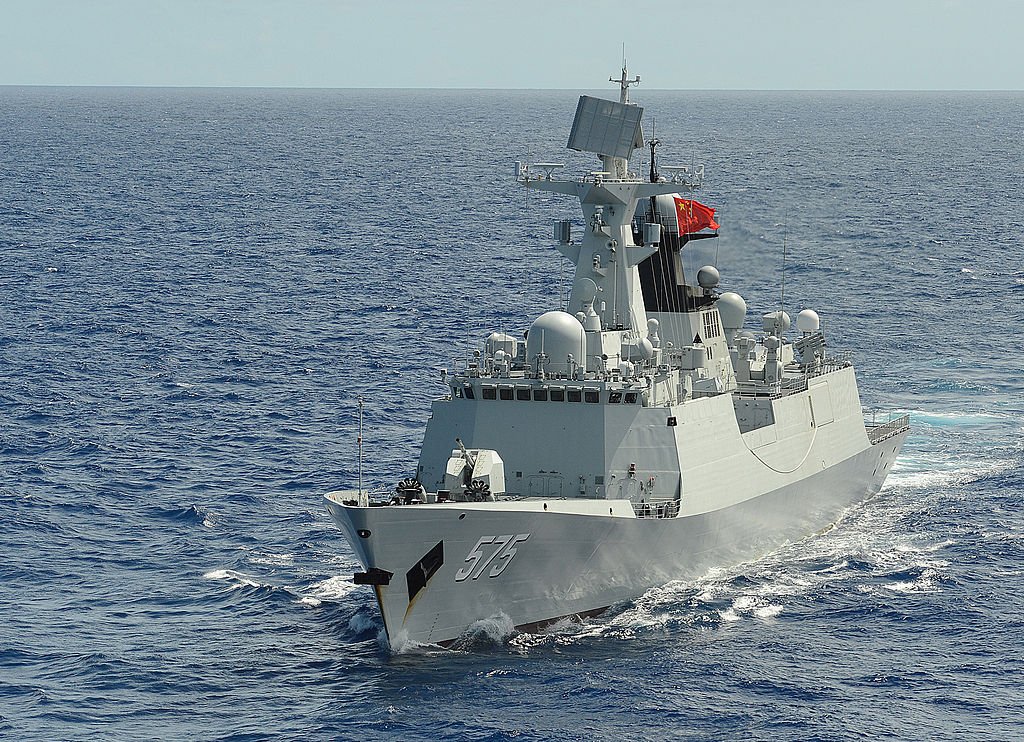Water Wars: Search and Rescue
China’s state-owned Xinhua News has reported the opening of a maritime rescue facility on Yongshu Reef (Fiery Cross Reef), one of the artificial islands it has built in the Spratly Islands region of the South China Sea.

Published by The Lawfare Institute
in Cooperation With

China’s state-owned Xinhua News has reported the opening of a maritime rescue facility on Yongshu Reef (Fiery Cross Reef), one of the artificial islands it has built in the Spratly Islands region of the South China Sea.
In its report, Xinhua also noted that China’s Ministry of Transport has stationed two rescue ships in the Spratly Islands since July 2018, staffed with rescuers and diving equipment. According to Xinhua, these ships have rescued 16 people and two ships since arriving, and have salvaged over $1 million worth of property.
The construction of this rescue facility is part of China’s larger campaign to develop military and administrative control of the South China Sea region. Three of the artificial islands in the Spratlys contain new military-grade airfields, and there are recent reports of missile emplacements, storage facilities and surveillance equipment stationed throughout the islands. China has also built up civilian capabilities on the artificial islands, including ecological conservation and restoration facilities, and marine observation stations.
Philippines Foreign Affairs Secretary Teodoro Locsin has announced that his nation will protest the opening of the rescue center, in keeping with the 2016 tribunal ruling that China’s claims in the South China Sea exceed its rights under international law. However, the office of Philippine President Rodrigo Duterte had previously endorsed the building of the rescue center, highlighting different approaches to China within the Philippine government.
The United States views China’s building of military and civilian facilities in the South China Sea as an attempt to claim sovereignty over the region in excess of its rights under international law. To push back against these excessive claims, the United States has conducted frequent “freedom of navigation operations” (FONOPS) over recent years to demonstrate that the South China Sea remains international waters.
In Other News…
In India
The French destroyer FNS Cassard docked in Mumbai, India, Jan. 24-29, in the first official action pursuant to a joint logistical agreement signed between France and India in March 2018. During the port call, the crew of the FNS Cassard promoted anti-piracy activities, and is continuing on to take part in the European Union’s anti-piracy initiative EU NAVFOR (“Operation Atalanta”) following the stay in India.
The Cassard carries particular significance, as it rescued 12 stranded Indian sailors in the Persian Gulf in November 2018 when their ship, the Durban Queen, capsized.
The Cassard is the first French warship that has docked at an Indian port since Prime Minister Narendra Modi of India and French President Emmanuel Macron signed a strategic pact between the two countries last March. The two countries also agreed to increased sharing of classified and protected information, logistical support for each other’s navies and increased joint training and humanitarian assistance projects. Additionally, France is selling multiple weapon systems to India, including Scorpene submarines. India signed a similar deal with the United States in August 2016.
France has significant holdings in the Indian Ocean, including overseas territory and exclusive economic zones covering much of the ocean’s surface. For this reason, it already has much of its navy stationed in the Indian Ocean or at permanent bases in Djibouti, Abu Dhabi and its island holdings.
While the Cassard’s mission in Mumbai was focused on anti-piracy operations, the logistical agreement itself is at least partly aimed at the security threat posed by China. At the agreement’s signing in March, Macron emphasized the importance of the Indian Ocean to the world’s stability, saying it “cannot become a place of hegemony.”
On Weibo
A defense blogger by the username of Haohan-Red Shark has posted photos on his Weibo account that appear to show an electromagnetic railgun mounted on a Chinese Type 07211 Yuting-class landing ship, the Haiyang Shan. If the photos are accurate, they would indicate that China has advanced its railgun prototype sufficiently to conduct sea-testing, a level of development that no other navy in the world has yet reached.
According to CNBC, U.S. intelligence believes that China has been testing railguns since 2011, and that the testing will be complete around 2023. CNBC also reported that the Chinese weapon system is believed to be capable of striking a target at a range of 124 miles.
Railguns utilize electromagnetic force, rather than gun-powder, to propel a projectile along magnetic rails. This makes their ammunition much cheaper than a missile, but no navy has yet installed them on operational warships, in part because their high energy cost requires a ship to have custom-built energy generation.
Chinese media have reported that the People’s Liberation Army Navy (PLAN) will “soon” equip its warships with railgun technology, following breakthroughs in the launching technology.
The U.S. Navy considers railguns a “game-changer” due to their strike range, but their deployment appears to be years in the future. China’s development of this technology could therefore allow it to have railgun-equipped warships five years or more ahead of the United States, which could have major security implications in the South China Sea and elsewhere.
In Joint Operations
The United States conducted multiple exercises with its allies in the South and East China Seas in January, in an assertion of its military power in the region.
The American guided-missile destroyer USS McCampbell and U.K. Royal Navy frigate HMS Argyll engaged in joint exercises Jan. 11-16 in the South China Sea, including communication drills, division tactics and personnel exchanges.
Prior to conducting these joint drills, the USS McCampbell had sailed near disputed islands in the South China Sea in the first FONOP of 2019. The United States has been conducting such FONOPS in the South China Sea periodically, in order to assert that international shipping has the right to traverse the disputed waters without asking China for permission.
The U.S. also flew two B-52H Stratofortress strategic bombers over the East China Sea and the Sea of Japan on Jan. 28, in support of the Indo-Pacific Command’s continuous bomber presence mission. While this type of mission is not novel, China has previous termed such overflights “provocative.”
Commentary and Analysis
In the National Interest, Andrew Erickson lays out a vision of “Competitive Coexistence” between the United States and China, which he argues is a realistic way to view relations between the two powers. This strategy from a U.S. perspective, Erickson argues, rests on four pillars: opposing China when it acts in a harmful manner; accepting risk and friction by contesting actions that harm American interests; holding ground in disputed areas; and reducing tensions and pursuing shared interests where Beijing is willing.
Also in the National Interest, Nicolai Fogth Gjøde Nielsen writes that China has been able to expand its influence by using a strategy of “below-the-threshold expansion,” small bursts of action calibrated to avoid armed conflict even as China’s neighbors contest its aggregation of territory.
And in the Diplomat, Ngo Di Lan contrasts America’s response to China’s expansion in the South China Sea with its decision to conduct the Berlin Airlift in 1948 to counter similar Soviet expansion. The article asserts that America’s lack of a decisive response to Chinese “salami-slicing” tactics shows it is less willing to assume risk than it was in Berlin, and it has therefore been much less effective in deterring aggression.




